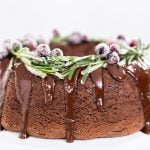
Introduction
In recent years, the demand for gluten-free alternatives has surged as more individuals are opting for gluten-free diets due to various health reasons or dietary preferences. Among the myriad of gluten-free options, one delectable creation stands out – the gluten-free chocolate croissant. In this article, we will delve into the world of this scrumptious pastry, exploring its origin, ingredients, preparation, and why it has become a favorite among both gluten-sensitive individuals and pastry enthusiasts.
The Allure of Croissants
A Brief History
Croissants, known for their flaky layers and buttery taste, have their origins in France. These crescent-shaped delights have gained international acclaim for their exquisite taste and texture. However, for those with gluten sensitivities, enjoying a traditional croissant can be a challenge due to the presence of gluten-rich wheat flour.
Gluten-Free Chocolate Croissant: A Culinary Marvel
The Ingredients
Creating a gluten-free chocolate croissant requires a blend of alternative flours, such as rice flour, almond flour, or coconut flour. These flours mimic the texture and flavor of traditional wheat flour while remaining gluten-free. Additionally, ingredients like xanthan gum and psyllium husk are often used as binding agents to ensure the dough holds together.
The Filling
The star of the show in a gluten-free chocolate croissant is, of course, the chocolate. High-quality dark chocolate is usually preferred for its rich, bittersweet flavor. Some variations may include hazelnut or almond paste, adding a delightful nutty undertone to the sweet treat.
Preparation
Step 1: Making the Dough
To begin, mix the gluten-free flours, xanthan gum, yeast, sugar, and a pinch of salt in a bowl. Slowly add warm water and melted butter while stirring until a dough forms. Allow it to rest for about an hour, allowing the yeast to work its magic.
Step 2: Rolling and Folding
Roll out the dough into a rectangle, then fold it into thirds, similar to creating layers in a puff pastry. Repeat this process a few times to create those coveted flaky layers.
Step 3: Adding the Chocolate
After the dough has rested, roll it out one final time and sprinkle generous chunks of dark chocolate evenly across the surface. Roll the dough into a log, then slice it into individual croissants.
Step 4: Baking
Place the croissants on a baking sheet and let them rise for about 30 minutes. Then, bake in a preheated oven until they turn golden brown and emit a mouthwatering aroma.
The Irresistible Charm
The gluten-free chocolate croissant offers a symphony of flavors and textures. The outer layer boasts a satisfying crunch, while the inner layers are soft and buttery. The surprise burst of rich, melted chocolate with every bite makes it an irresistible treat for all, whether gluten-sensitive or not.
Conclusion
In conclusion, the gluten-free chocolate croissant is a testament to culinary innovation and inclusivity. It allows individuals with dietary restrictions to savor the joy of a classic pastry without compromising on taste or texture. So, whether you’re gluten-sensitive or simply a fan of delightful pastries, don’t miss the opportunity to indulge in this gluten-free delight.
FAQs
1. Are gluten-free chocolate croissants widely available?
While they may not be as common as traditional croissants, you can find gluten-free chocolate croissants in specialty bakeries and some supermarkets. Additionally, many home bakers have perfected their own gluten-free recipes.
2. Can I make gluten-free chocolate croissants at home?
Absolutely! There are numerous gluten-free chocolate croissant recipes available online, complete with step-by-step instructions. With a little patience and practice, you can enjoy homemade gluten-free chocolate croissants anytime you like.
3. What is the best type of chocolate to use in gluten-free chocolate croissants?
High-quality dark chocolate is often recommended for its intense flavor and smooth texture. However, you can experiment with different types of chocolate to suit your personal preference.
4. Do gluten-free chocolate croissants taste different from regular croissants?
Gluten-free chocolate croissants have a slightly different texture and flavor due to the alternative flours used. They tend to be a bit denser but still delicious in their own right.
5. Are there any other gluten-free pastries worth trying?
Absolutely! Gluten-free baking has come a long way, and you can find a wide variety of gluten-free pastries, including muffins, cookies, and even gluten-free versions of classic cakes and pies.










